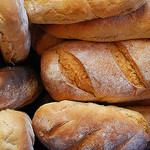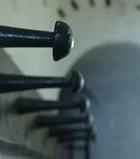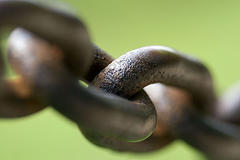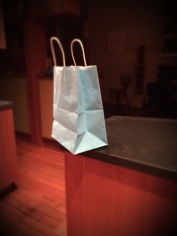You’ve probably heard the term mnemonics, which refers generally to methods for enhancing learning or memory. It comes from the Greek mnēmōn meaning mindful. Familiar examples include acronyms such as the BRAT diet for upset stomach, or OFNR (which looks kind of like “oftener”) for the Non-Violent Communication rubric  Observation, Feeling, Need, Request. There are whole books devoted to mnemonics, and people who specialize in these memory tricks are called mnemonists.
Observation, Feeling, Need, Request. There are whole books devoted to mnemonics, and people who specialize in these memory tricks are called mnemonists.
I’ll be discussing some of these tricks in various posts, but I’ll start with one of my favorites which is kind of like a mental alarm that you can use anywhere. One way that memories are given salience is through the detection of something abnormal. For example, you are more likely to remember something strange-looking than something ordinary. This principal can be exploited to form a new memory cue.
Let’s say you want to remember to take the bread out of the freezer when you get home. You don’t have anything to write on, or any other easy way to make a physical reminder. What you can do is think of something that you will definitely see when you get home, such as the front door. Now, since it’s the bread you are trying to remember, imagine that when you walk up to your house, in place of the front door you see a huge loaf of bread with a door handle on it! Imagine reaching out to the door handle and swinging the loaf of bread open to enter the house.
The more vivid and sensory you can make the memory, the more likely it is to work. Picture the loaf-door in your mind, imagine the smell of the bread as you open the loaf-door, think of the loafy sound it would make, etc. When you get home there’s a pretty good chance that as you get to the door those imagined memories will pop up and remind you to take the bread out of the freezer. To improve the odds even more, make up several of those memories for different things that you will see you when you get home. After the front door, you could imagine a piece of furniture being the loaf, or picture your dog as a loaf of bread wagging it’s crusty tail!
Try it–I bet you’ll find lots of uses for this one, and the more you practice, the better it gets. In fact, see if when you get to your front door, you think of bread, just from having read this blog today!
[Photo Credit: Benediktv – License]
 I don’t speak Spanish, but on a recent trip to Mexico my wife and I tried to learn some basic words and phrases to get around. When helpful shop owners would approach us I wanted to be able to let them know that we were just browsing. Google translate provided “solo estamos mirando,” as the translation for “we’re only looking.” I’ve always disliked (and not been very good at) brute force repetition as a memorizing technique, so I applied a visual association method. I imagined the actor John Stamos free soloing El Capitan (a la Alex Honnold) when a policeman stops him to read him his Miranda rights. Solo estamos mirando! (If you are a basically non-Spanish speaker like me, I recently got a tip from a native Spanish speaker on the pronunciation of mirando, which is to emphasize the “mir” part with a distinctive “ee” sound: MEE-ran-doe. The way I was pronouncing it before he couldn’t even tell what the word was!)
I don’t speak Spanish, but on a recent trip to Mexico my wife and I tried to learn some basic words and phrases to get around. When helpful shop owners would approach us I wanted to be able to let them know that we were just browsing. Google translate provided “solo estamos mirando,” as the translation for “we’re only looking.” I’ve always disliked (and not been very good at) brute force repetition as a memorizing technique, so I applied a visual association method. I imagined the actor John Stamos free soloing El Capitan (a la Alex Honnold) when a policeman stops him to read him his Miranda rights. Solo estamos mirando! (If you are a basically non-Spanish speaker like me, I recently got a tip from a native Spanish speaker on the pronunciation of mirando, which is to emphasize the “mir” part with a distinctive “ee” sound: MEE-ran-doe. The way I was pronouncing it before he couldn’t even tell what the word was!)

 the method can be used for any size list. The basic idea is that you create an unusual image to link each item to the next one. So in this case you could picture a dozen eggs sitting out on a counter, and then a carton of milk jumping up and down by itself like a pogo-stick, smashing the eggs! Next, link the eggs to the chives. You could continue the same image, imagining the chives leaping into the smashed eggs. Or you could use a separate association from eggs to chives, such as seeing some chives growing up out of the ground and then sprouting eggs at the top as if they were flowers. To attach nutmeg to chives, picture putting the chives in a nutmeg grinder and grinding them up. As you can see the links are limited only by your imagination. Once you have the links established you can go back and forth in the list at will, but they will all be chained solidly together. Like all these methods, the more you practice the faster you get, and it can be entertaining exercise for your creativity at the same time. Just don’t end up bringing home the pogo-stick.
the method can be used for any size list. The basic idea is that you create an unusual image to link each item to the next one. So in this case you could picture a dozen eggs sitting out on a counter, and then a carton of milk jumping up and down by itself like a pogo-stick, smashing the eggs! Next, link the eggs to the chives. You could continue the same image, imagining the chives leaping into the smashed eggs. Or you could use a separate association from eggs to chives, such as seeing some chives growing up out of the ground and then sprouting eggs at the top as if they were flowers. To attach nutmeg to chives, picture putting the chives in a nutmeg grinder and grinding them up. As you can see the links are limited only by your imagination. Once you have the links established you can go back and forth in the list at will, but they will all be chained solidly together. Like all these methods, the more you practice the faster you get, and it can be entertaining exercise for your creativity at the same time. Just don’t end up bringing home the pogo-stick.





